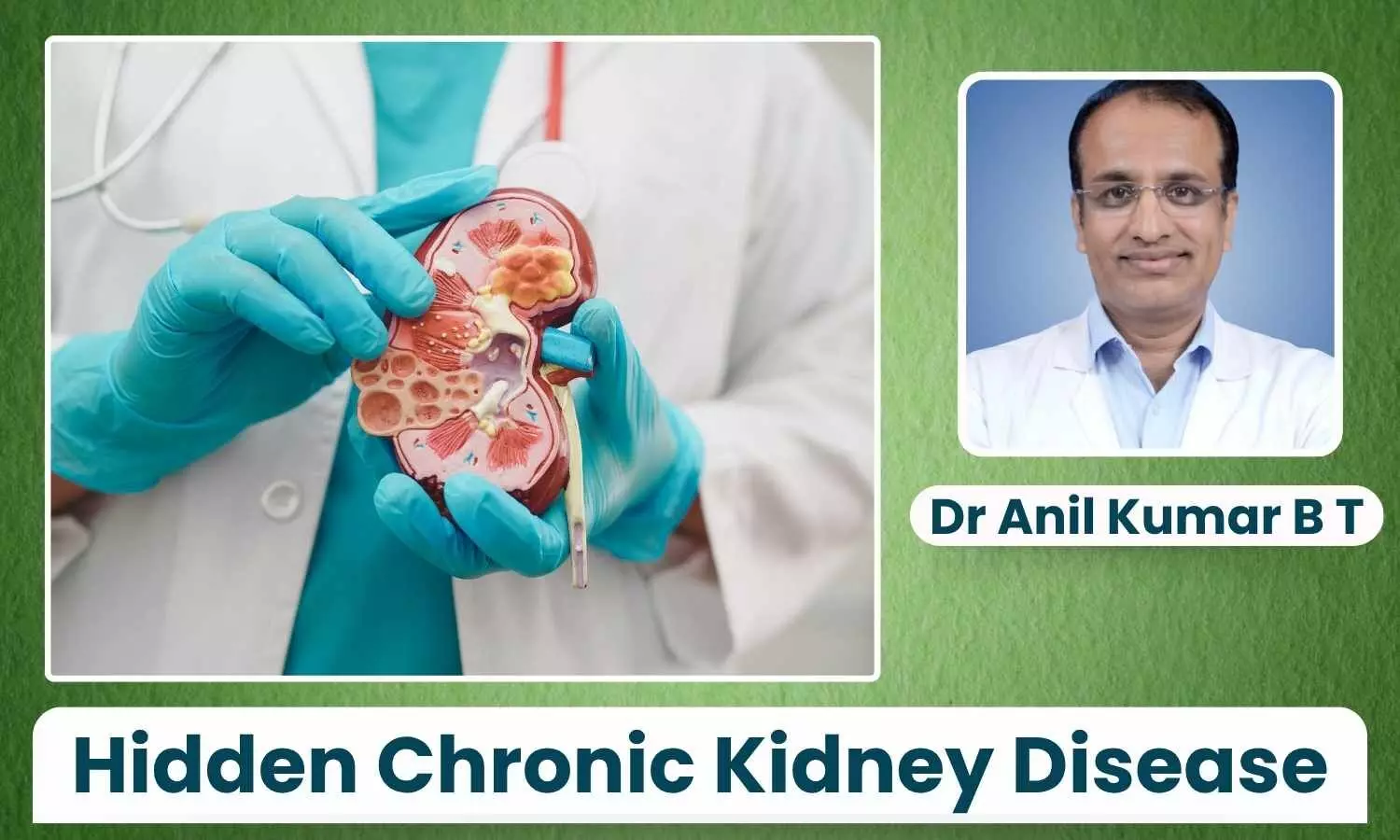Creatinine Levels Normal, But Kidneys Not Healthy? Hidden CKD Crisis In Young Adults - Dr Anil Kumar B T

It is not uncommon for young people to pass routine health examinations with flying colours, particularly if their serum creatinine levels are within the so-called "normal" range.
However, as any nephrologist will tell you, a normal creatinine level does not always mean your kidneys are working well. In truth, many early-stage cases of chronic kidney disease (CKD), particularly in young individuals, go unreported because we rely on antiquated stereotypes.
Serum creatinine, while commonly used, has significant limitations. It is influenced by various factors such as muscle mass, gender, hydration, and even food. A young, slim person may have severe kidney disease long before their creatinine level suggests a concern.
What is the danger? This mistaken sense of certainty can result in a delayed diagnosis and treatment.
Why Creatinine Isn't the Full Picture
The kidneys eliminate creatinine, which is a waste product. However, if you have less muscle mass, as many young people do, your body produces less creatinine, making your levels appear deceptively low even as kidney function declines. This is why using creatinine alone is hazardous.
eGFR (estimated glomerular filtration rate) is a superior technique for determining kidney function based on age, gender, and creatinine. A young adult's eGFR of less than 90 mL/min/1.73m² may indicate early disease, even if creatinine levels are technically "normal."
The urine albumin-to-creatinine ratio (UACR) is similarly important. This test detects protein in urine, which may suggest renal stress or injury. Elevated UACR levels can emerge before a reduction in eGFR, acting as an early warning signal.
Why Are Young People Being Missed?
Several elements come into play.
1. Asymptomatic progression: There's a reason why CKD is regarded as the "silent disease". Symptoms such as fatigue, edema, or abnormalities in urine may not show until much later.
2. Low suspicion among doctors: Kidney problems are sometimes neglected when a 28-year-old walks in with no complaints.
3. Overreliance on outdated tests: Many screening panels only include serum creatinine, ignoring more sensitive markers.
4. Inadequate standard screening in at-risk groups: Young people with diabetes, hypertension, autoimmune illnesses, or a family history of kidney disease are typically not referred for specialized testing on time.
Hidden Costs of Delayed Detection
The kidney is incredibly adaptable, but this also means that damage accumulates quietly. When eGFR falls below 60 or protein in the urine reaches dangerous levels, we are already in stage 3 CKD. At this point, patients may need medications, dietary restrictions, or lifestyle changes. If not addressed, the illness can lead to dialysis or transplantation.
There's also a psychological weight. Being told in your 30s that you have a chronic illness, something that may have been diagnosed years ago, is incredibly upsetting.
Changing How We Screen
It is time to go from reaction to prevention. Here's what we can do.
1. Include eGFR and UACR in routine tests for all people with risk factors, regardless of age.
2. Inform patients and primary care providers of the limitations of creatinine. A result in the "normal" range does not indicate that the case is concluded.
3. Identify high-risk individuals early, such as those with recurrent urinary tract infections, a family history of CKD, poorly controlled blood sugar or hypertension, or autoimmune disorders.
4. Encourage good lifestyle practices early on, such as staying hydrated, limiting NSAID use, managing weight and blood pressure, and avoiding unnecessary supplements or medicines that can strain the kidneys.
When to see a Nephrologist?
If regular tests reveal a low eGFR (less than 90) or protein in the urine, it is not too early to consult a kidney specialist. We can help stage the condition, determine the root cause, and design a management strategy to slow its advancement.
Even in borderline cases, early referral can help avert irreversible damage. Individuals with the appropriate therapies can live full, robust lives without the need for dialysis or transplantation.
Overall Public Health Picture
Chronic renal illness is growing more prevalent in India, with people in their twenties and thirties bearing a disproportionate part of the burden. Unfortunately, many of these cases go untreated until the kidney function is severely compromised.
This is a public health problem, not just a nephrology issue. The more we hold onto outdated methods and attitudes, the more young people we will lose. A normal creatinine level should not be mistaken for an indication of health.
If you're young, at risk, or just want to be proactive, talk to your doctor about eGFR and UACR. These simple, cheap tests can provide information that creatinine alone cannot.
Early action can make all the difference. CKD may be silent, but it is not invisible, if we know where to look. Let us stop presuming that young kidneys are healthy based on a single number.


